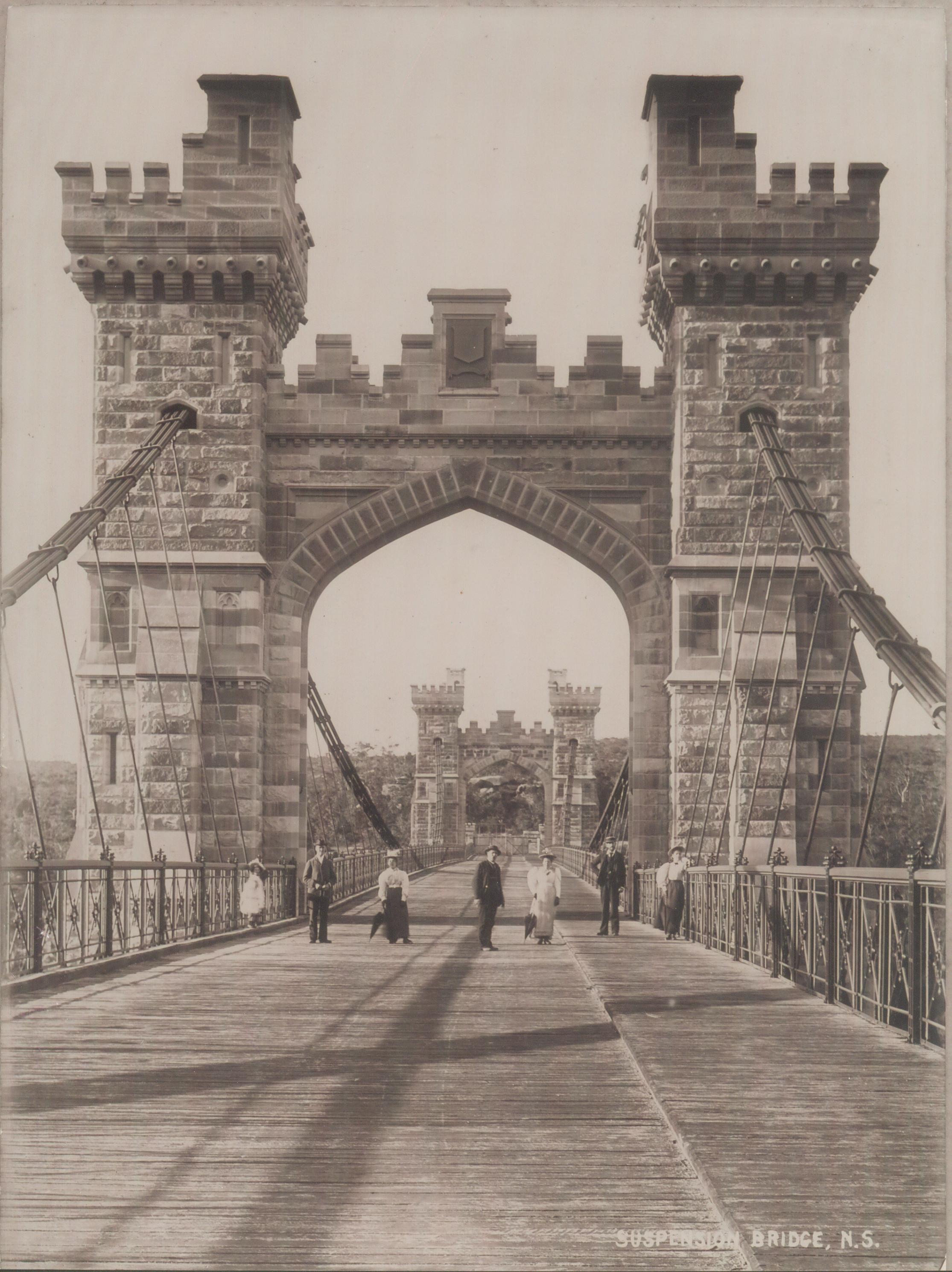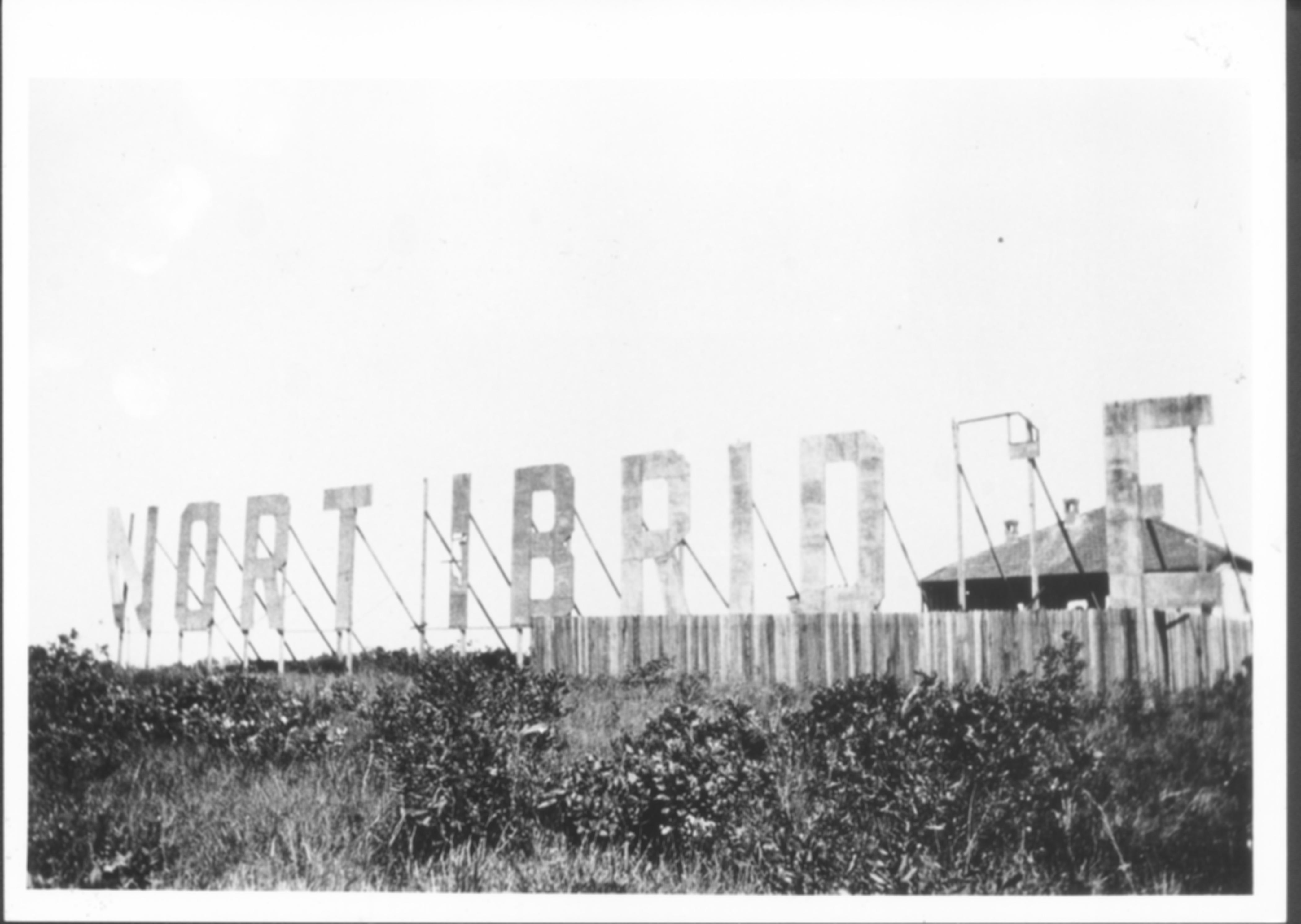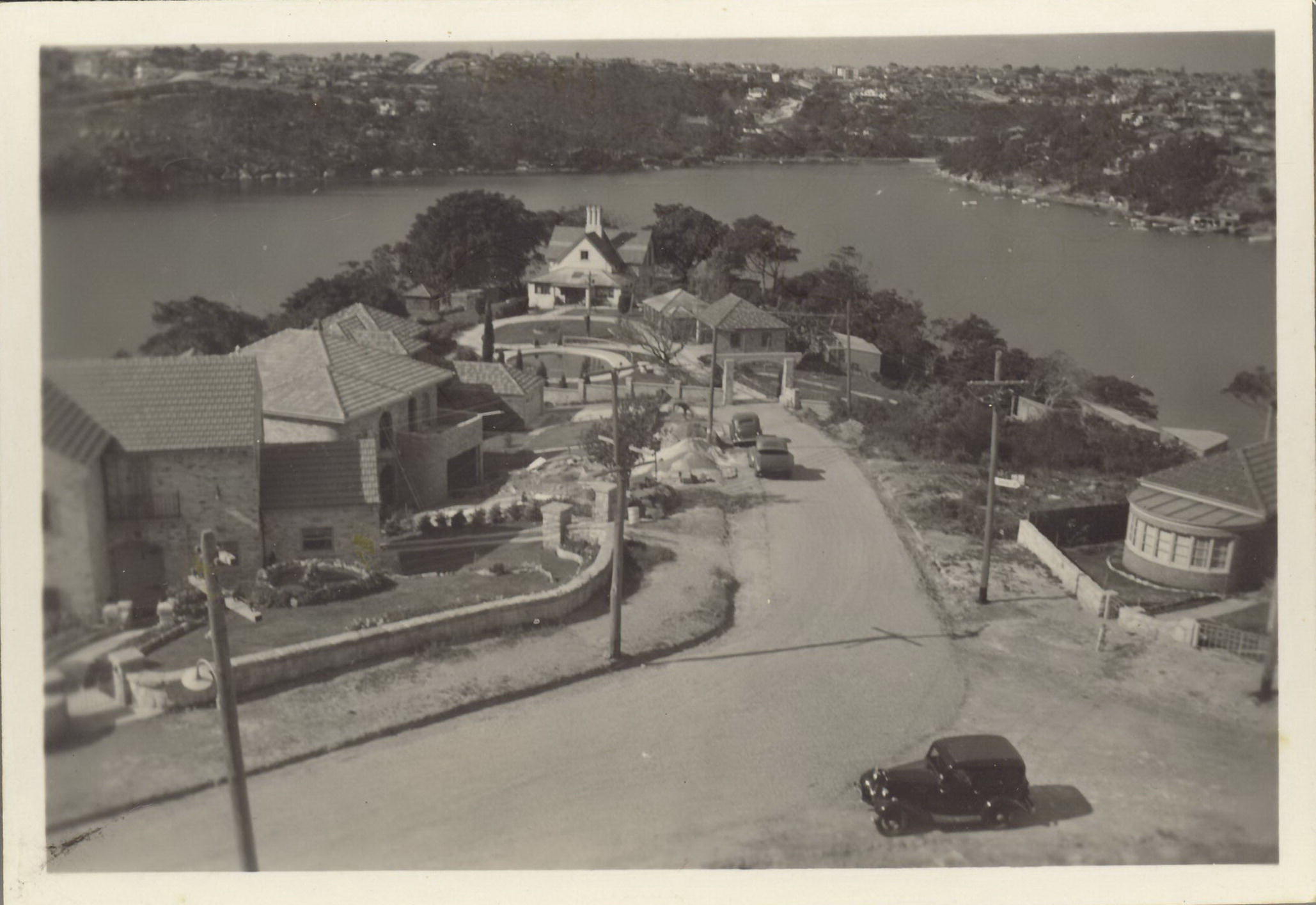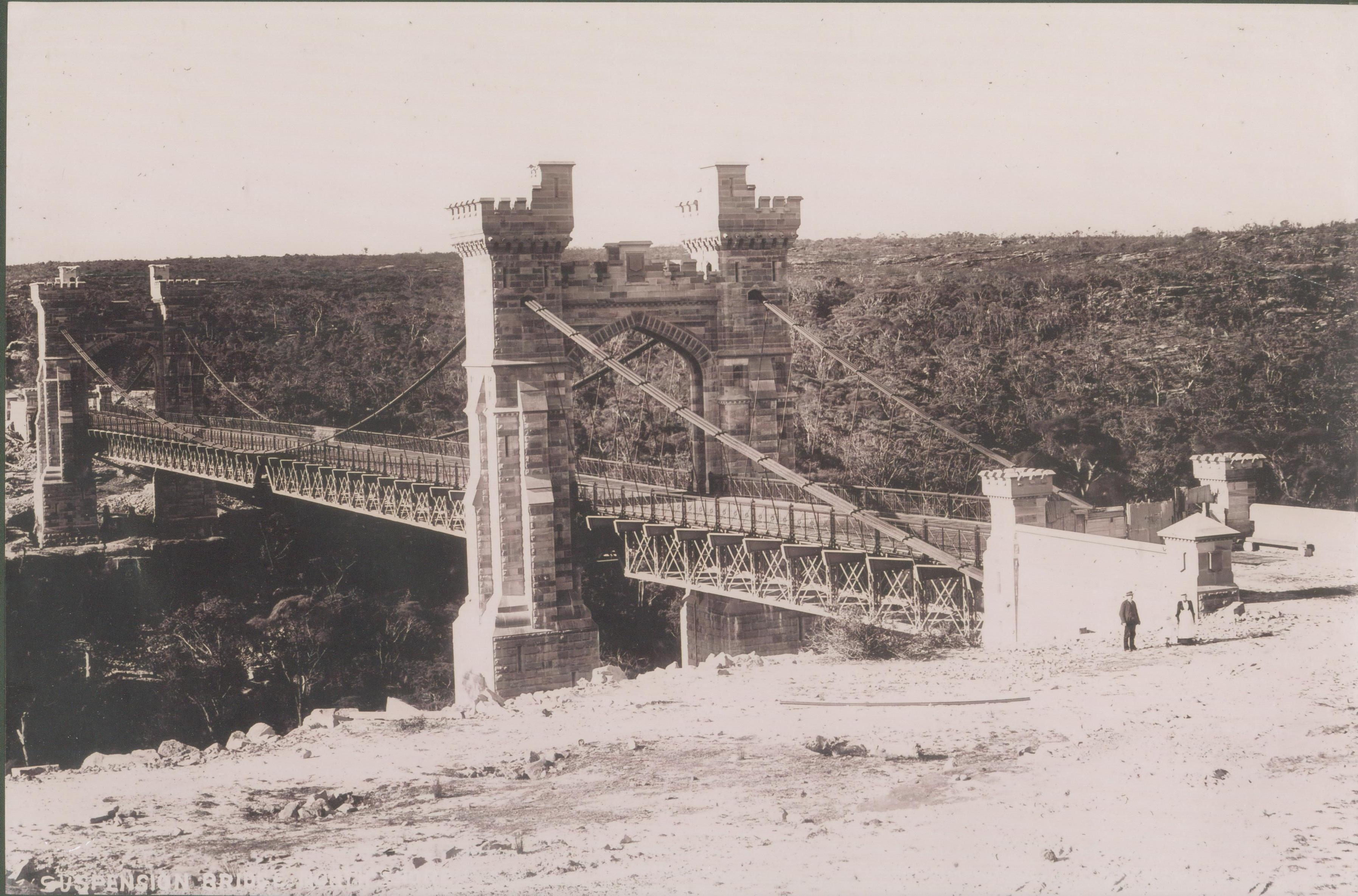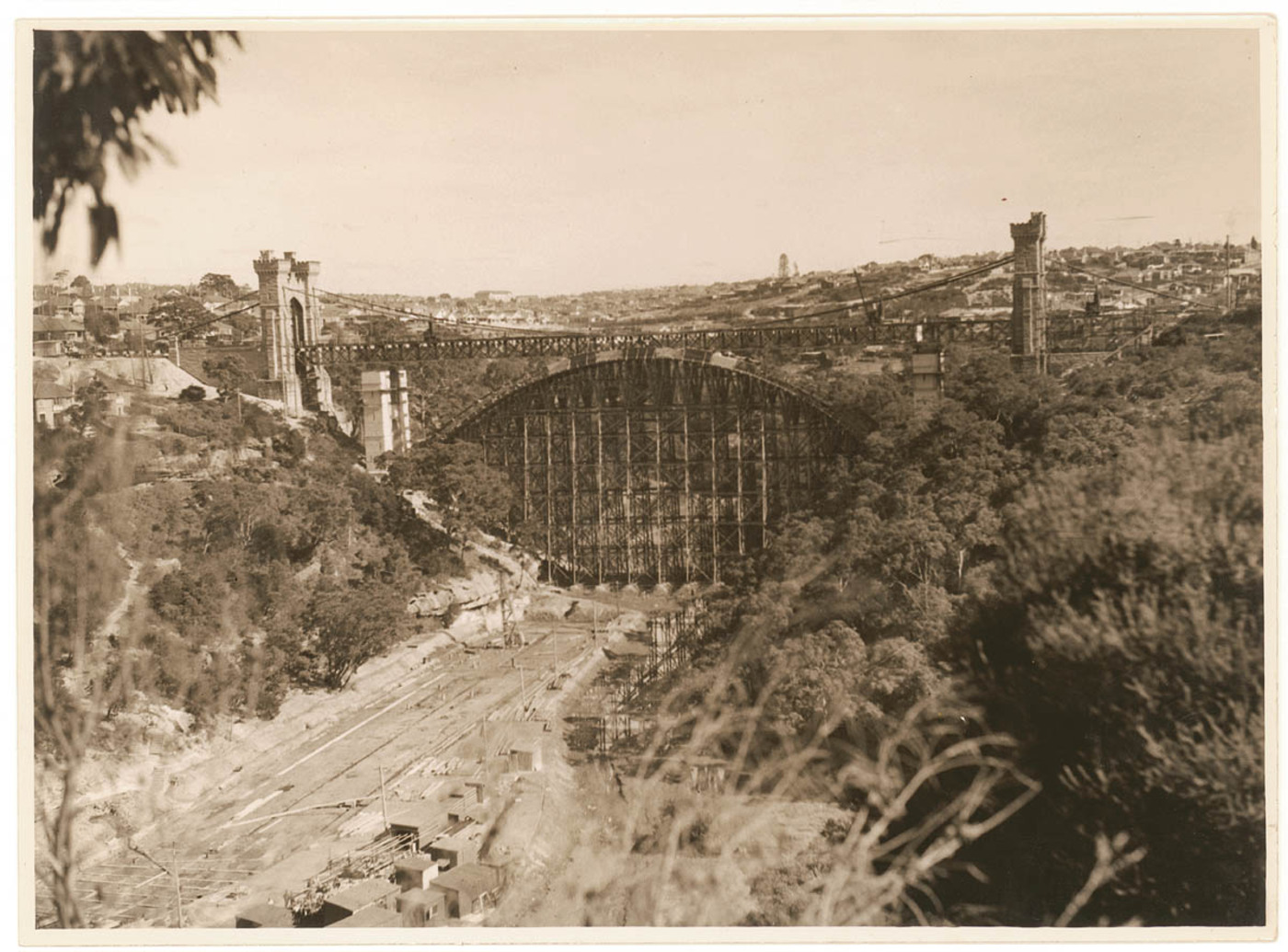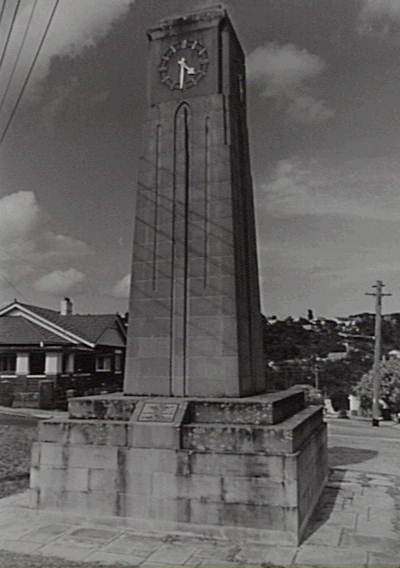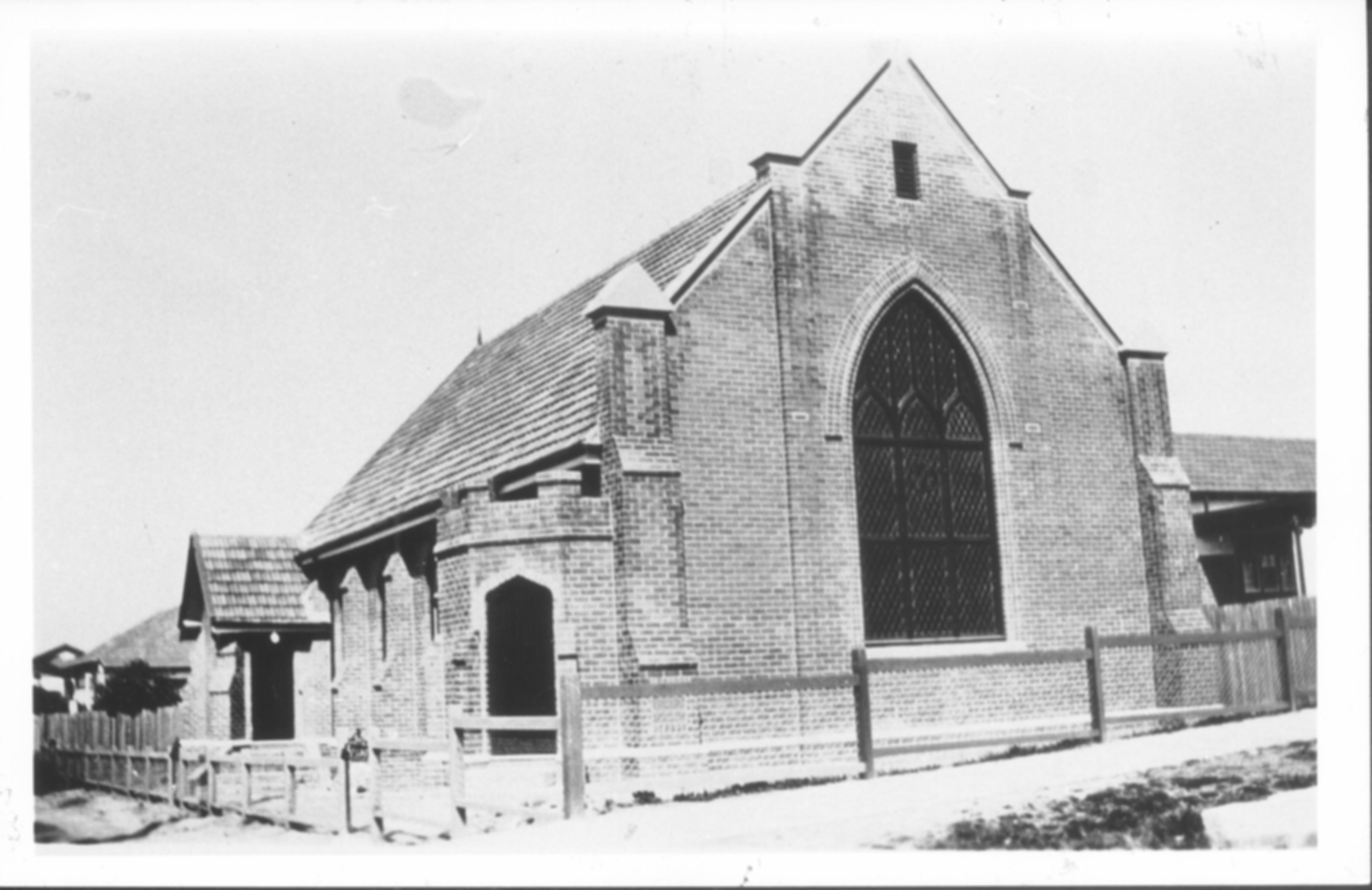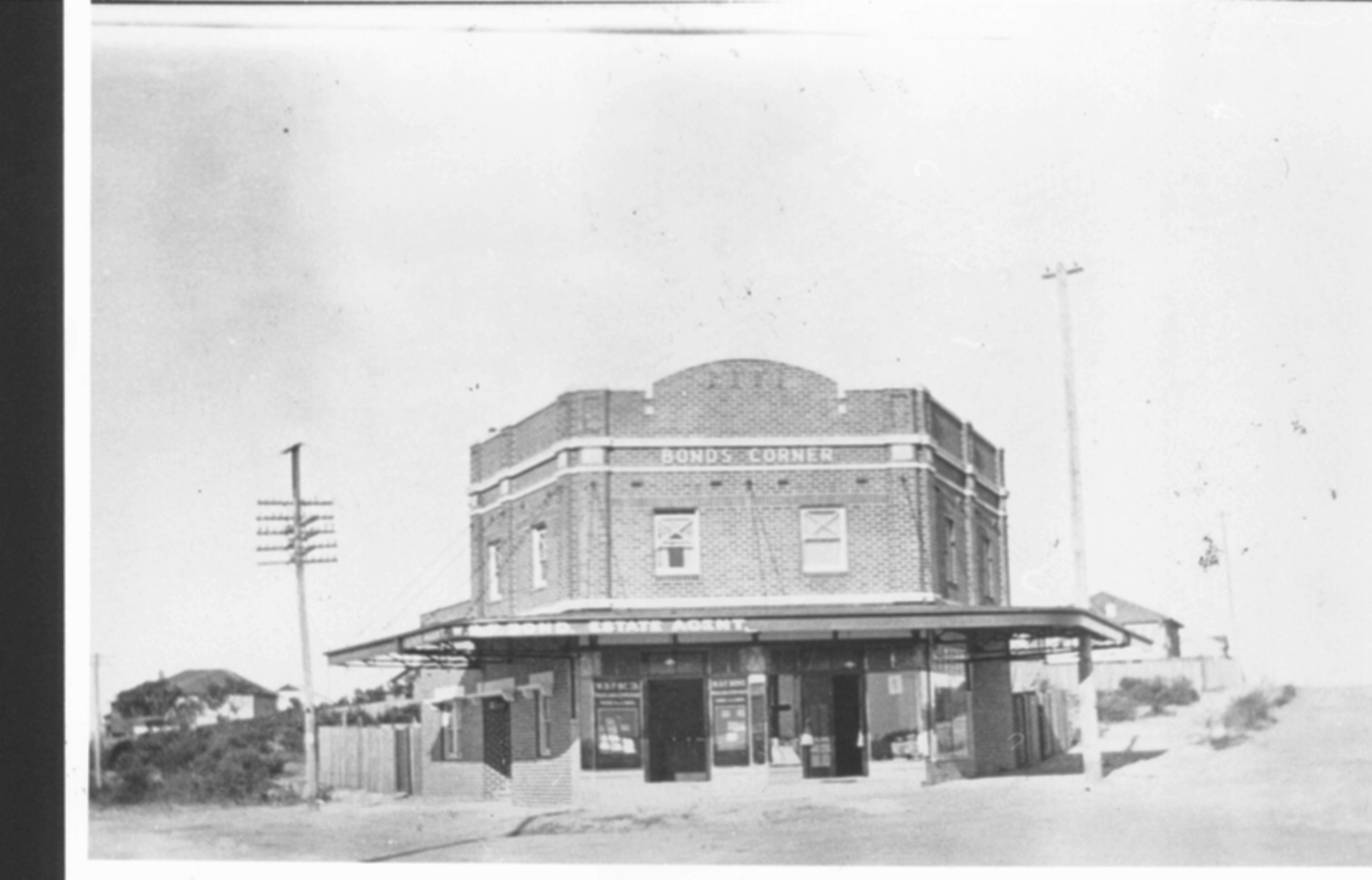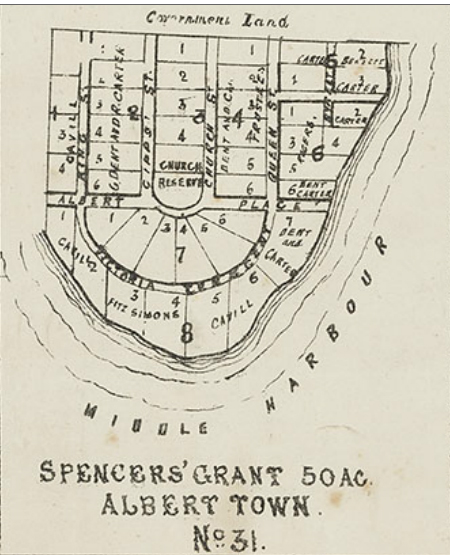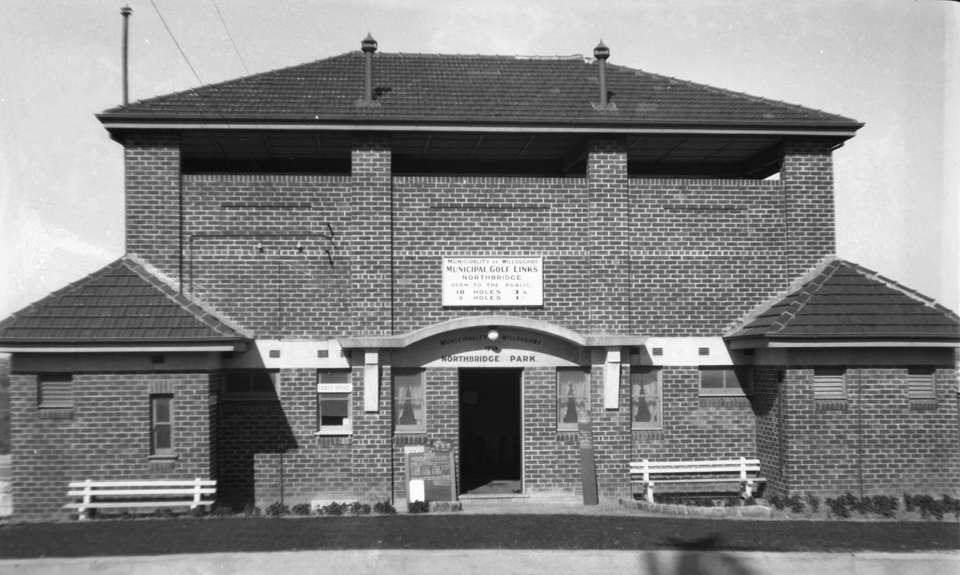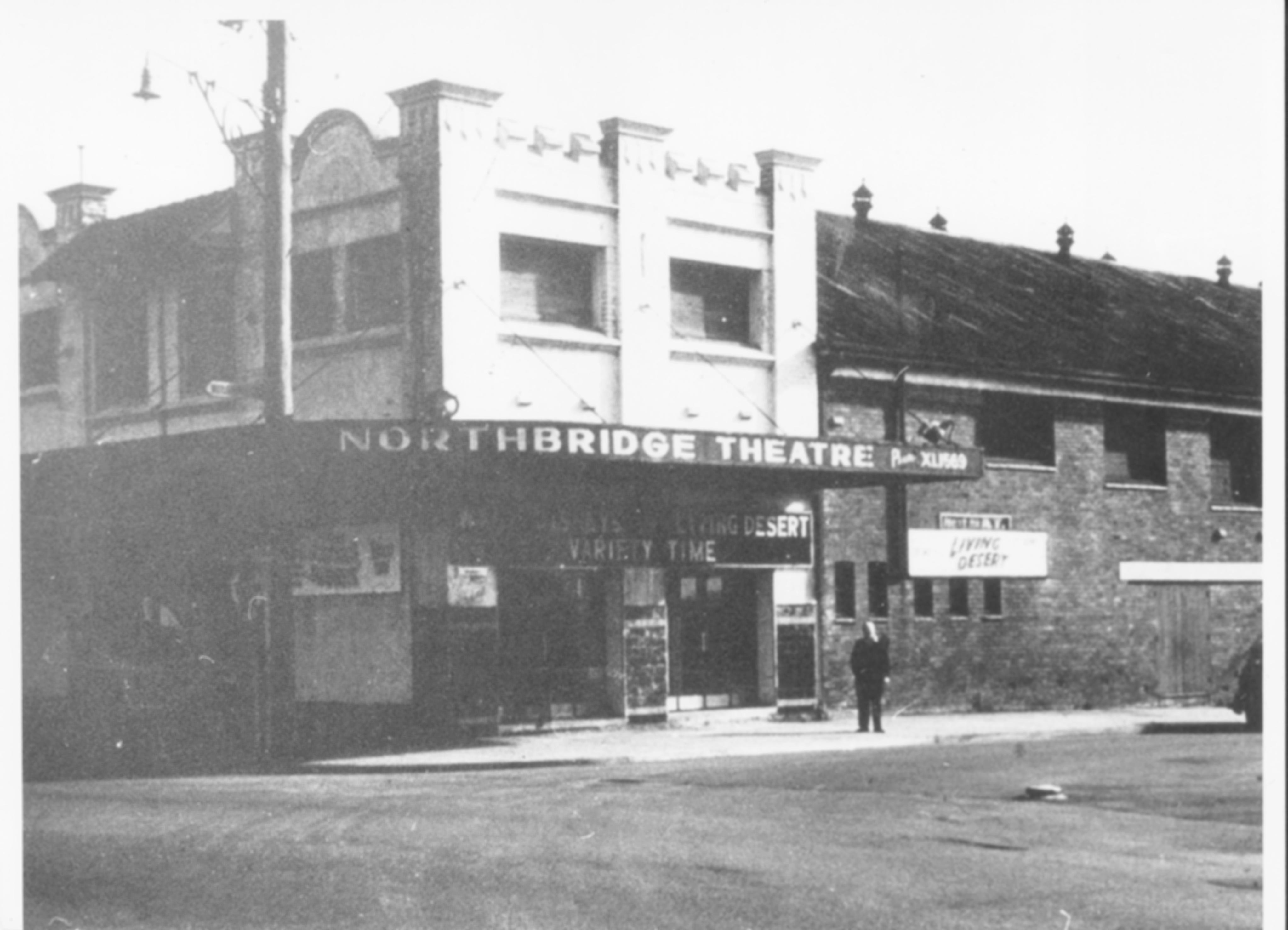The Dictionary of Sydney was archived in 2021.
Northbridge
Citation
Persistent URL for this entry
To cite this entry in text
To cite this entry in a Wikipedia footnote citation
To cite this entry as a Wikipedia External link
Northbridge
Northbridge is a tranquil, leafy but rugged peninsula jutting eastwards into Middle Harbour, flanked by Long Bay to the south and Sailors Bay to the north. It is seven kilometres north of the Sydney central business district in the Willoughby City local government area and it covers an area of 2.8 square kilometres. Now often considered a hidden gem, it was originally regarded as having little resource value to the fledgling colony of New South Wales. [1] Its inaccessibility meant it was never industrialised and port facilities were not developed despite considerable harbour depths of up to 20 metres. [2]
Name
[media]Until 1913 the Northbridge area had no specific name. When the Municipality of North Willoughby was formed in 1865, Northbridge was still known as either Willoughby or Middle Harbour, and remained so until 1890. [3] The suburb's modern name was derived from the bridge (originally going to be called the 'North Bridge') completed in 1892 at a cost of £100,000. [4] The structure's name has evolved several times over the decades having been variously known as Cammeray Bridge, North Sydney Suspension Bridge, Suspension Bridge, Cammeray, Suspension Bridge, Northbridge and Suspension Bridge, North Sydney. It is currently listed with Roads and Maritime Services as being Long Gully Bridge but it is still commonly referred to locally as the 'suspension bridge.' [5]
[media]The company responsible for its construction – the North Sydney Investment and Tramway Company – owned most of the land in the immediate vicinity and sold it in individual lots. The company called the area Northbridge for two reasons. Firstly, the area being developed was 'north' of the suspension bridge and secondly, the suspension bridge itself was often referred to as the 'north bridge' as it was the first bridge north of Sydney Harbour. The name must have struck a chord and became a real estate drawcard in an eye catching 'Hollywoodland' style advertising sign that was erected in the rear yards of two houses along the highest point of Weetawa Road in the early 1920s. This signage could be seen for quite some distance but was removed by 1925 when the two real estate agents sold their interests in the properties involved.
Aboriginal heritage
A large proportion of Sydney's North Shore, including the City of Willoughby, was inhabited by the Cammeraygal clan. The Cammeraygal people lived in the Willoughby area until the 1820s and are recorded as being in the northern parts of the Sydney region for approximately 5,800 years. The Aboriginal people lived in tribes or clans which took their name from their local area. The district was called Cammerra and the male head was Cammerragal or Cammeraygal. A woman of this tribe was called Cammerayleon. [6] It is believed that the Cammeraygal clan may be named after the 'camy,' the generic name for spear in the Sydney area. [7]
The Willoughby local area is fortunate to have a rich history of Aboriginal culture and heritage with areas around Middle Harbour, Castlecrag and Lane Cove significant to local clans. The Cammeraygal roamed widely from the waters of Middle Cove to the reaches of Lane Cove but few, if any, sites remain intact. There is evidence of the Cammeraygal people still living in the Willoughby area in 1820. Disease, displacement and massacres meant that by the 1860s, Aboriginal people were only occasional visitors to the north shore area. [8]
Despite this, Northbridge has more street names derived from Aboriginal culture than any other suburb in Sydney. This is thought to be the direct result of Sir Allen Taylor, Director of the North Sydney Investment Company Ltd, after whom Taylor Square in Darlinghurst takes its title. However, it is thought that he only selected names that were easy to pronounce rather than those that had any direct Aboriginal connection to the suburb itself. [9]
Early days
[media]The first Crown grant in the Northbridge area was made in 1837 but because of its inaccessibility the area was left undisturbed by European settlers until the first public auctions in 1855. No free grants were ever made in the present day suburb area of Northbridge. Early settler Henry Hocken Bligh, first purchased land in 1856 and was signatory to the petition for the incorporation of Willoughby as a municipality. Although he did not live locally, he was mayor of Willoughby in 1865, 1869 and 1871. Another early resident was William Twemlow who lived at The Hermitage, a large two-storey sandstone house at Fig Tree Point, now Hallstrom Point, Hallstrom Close, from the mid 1870s until his death in 1909. This point was previously known as either Koorowal or Kuruwal, Aboriginal words meaning 'a wild fig tree'. [10]
Later it was owned by Sir Edward Hallstrom, a philanthropist, inventor and refrigeration industrialist, but was demolished after his death in 1970. The property contained a private zoo, in-ground salt water swimming pool and a ballroom. The house originally fronted Coolawin Road but its grounds now form Hallstrom Close. Hallstrom is most famously known as the inventor and manufacturer of the highly successful Silent Knight refrigerator which he produced in a factory in Willoughby Road, Artarmon. He was also a very generous benefactor, trustee and honorary director of the Taronga Park Zoo, to which he directed a large amount of his wealth both during his life and following his death. [11]
Suspension bridge
[media]With the land boom of the 1880s, most of the peninsula belonged to the North Sydney Investment and Tramway Company or the North Shore and Middle Harbour Land Company, who were planning to build a tramway and a bridge across the gully at Long Bay in order to expand the area. The bridge was originally called the North Sydney Bridge but the depression of 1892 saw both companies go into liquidation and at that point the name Northbridge began to appear. This downturn was caused by a number of factors including a severe drought, the sinking of wool, wheat and metal prices, and most of all, the withdrawal of British investment in NSW on a major scale.
It was the latter that had a great impact on the expansion of Northbridge. The Cammeray Bridge (or the 'suspension bridge' as it was known among locals) was opened to traffic in January 1892, yet public transport across the original suspended structure began 22 years later. [12] Nevertheless, it was considered one of the engineering wonders of Sydney and soon became a great tourist attraction. Designed by Professor William H Warren of the University of Sydney and JEF Coyle, consulting engineer, it had taken two years and nine months to complete using imported steel from Scotland and local sandstone from Castle Cove. A toll of threepence return for adults and one penny for children was charged. The tramway was not yet built, land sales slumped and the suburb's development slowed:
The original suspension bridge had a 500 ft. main span supported by steel cables and steel hanger rods. The deck was stiffened by an under truss which was pin connected at the centre of the span. The steel cables were supported on ornate sandstone towers and anchored into bedrock at each end of the gorge. The wooden deck carried two lanes of traffic plus two tram tracks and footways. Deterioration of the bridge due to corrosion led to the replacement of the suspension design by an arch in the 1930s. With a main span of 344 feet, the arch consists of two concrete ribs, peaking some 167 feet above stream level. Supported on the arches are columns carrying the deck on 14 reinforced concrete beam slab spans. [13]
In 1912 the bridge was handed over to the government as a gift by the company on the condition that it be repaired. The tramway was extended in 1914 to a terminus in Sailors Bay Road near the public school.
[media]However, in 1936 the suspension bridge was condemned as structurally unsound, designated for pedestrians only and closed to all vehicles. It was reconstructed as a concrete arch bridge and completed in 1939. When the reconstructed bridge was reopened there was a ballot to rename it and one proposal, 'Kent Bridge', actually received the most votes in a local election held in Northbridge Theatre but tradition won out with the name Northbridge being retained. [14] During World War II, trams ran across it once more due to petrol shortages.
[media]Adjacent to the bridge, on the corner of Strathallen and Cliff avenues, stands the War Memorial Clock erected by Northbridge Comforts Fund in 1948 in memory of those who died during World War II. It is a square obelisk shape with a simple clock face at its apex atop a square base, constructed of the same yellow sandstone as the bridge. [15]
Churches
St Mark's Anglican Church on Tunks Street was officially dedicated in March 1928, although regular services had been held in various private homes in Northbridge since 1919. A smaller church had been built in 1921, however, a site in Tunks Street was purchased in 1925 in response to the growing population. St Philip Neri Catholic Church on Sailors Bay Road was opened in 1942. A previous church, St Ciaran's, had been opened in 1926 in the same grounds and served as both a church and school. Both are now incorporated in St Philip Neri Parish School.
[media]The Uniting Church on the corner of Gunyah and Baringa roads, formerly the Northbridge Methodist War and Peace Memorial Church, was officially opened in 1955. Services had been held since 1924 in a church hall in the same grounds. The former Northbridge Presbyterian Church was remodelled and opened in 2010 as Northbridge Library, a branch of the Willoughby City Library Services.
Transport
Transport was difficult in the early days with the main route on water through The Spit and around Middle Head to Circular Quay. There was no public transport to the Northbridge peninsula until 1913. Electric trams were introduced in 1898 along Mowbray Road and Penshurst Street, Willoughby, at the western perimeter of Northbridge thereby accelerating land sales towards the Willoughby side of the suburb. In 1914 a tram line was laid across the suspension bridge which operated until 1936. Trams are inextricably bound to the history of the development of the suburb as they were its first viable form of public transport available in staged development linked to the suspension bridge. However, apart from a brief return during World War II in 1943, they all but disappeared in January 1948. The overhead lines remained in place but disused until 1953. [16]
The redesigned bridge was reopened on September 14, 1939, by the Right Honourable William Morris Hughes, immediately after he relaunched the original suspension bridge in its new incarnation as a concrete arch. The new bridge was originally conceived by architect Walter Burley Griffin and built during the 1930s. This roadway was designed to give increased access to Middle Harbour and the upper North Shore. However, its completion spelled the end a number of local streets including Eric Street, Lyle Street and part of Warrane Road. [17]
[media]Like many projects in the Willoughby local government area these projects were funded across various tiers of government to provide work for the unemployed during the Great Depression of the 1930s. Other projects included Northbridge Sporting Pavilion, Northbridge Baths, Northbridge Golf Course, Willoughby Incinerator, stormwater drainage, sports fields and the laying and maintenance of tram tracks.
Today, Northbridge relies heavily on motor vehicles, supplemented with regular bus services to and from Chatswood and the Sydney CBD along its major arterial roads, in particular Eastern Valley Way. This includes the longstanding 202 bus route, from which the Northbridge Progress Association newsletter takes its name.
Retail and industries
When people think of retail at Northbridge they assume that it originated near its greatest modern concentration around the intersection of Sailors Bay Road and Strathallen Avenue. While the current retail centre of Northbridge is to the west of Northbridge Plaza, the first shop and residence was built in 1915 further east on the corner of Woonona and Sailors Bay roads by renowned Sydney architect, Donald T Esplin, as an owner/occupier. By the 1930s, the trade on Sailors Bay Road consisted of six estate agents, one bank, two bank agencies, four grocers, three butchers, three fruiterers, a baker, two boot makers, three drapers, five refreshment rooms, two stationers (with lending libraries), one ironmonger, one tobacconist, one hairdresser, four doctors, two dentists, and one chemist.
[media]A large shopping mall, Northbridge Plaza, was built in 1961 on Sailors Bay Road, near Eastern Valley Way. It was significantly expanded in 1984 and again in 2007. Smaller retail outlets on Bonds Corner at the intersection of Neworra and Sailors Bay roads provide a well-known landmark and popular meeting point because of its distinctive façade and prominent location on a crest and jutting out from surrounding low structures. It is a largely intact, stripped, inter war classical two-storey pair of shops and demonstrates the early commercial development of Sailors Bay Road further east. The name 'Bonds Corner' originates with the real estate agent William D F Bond, who owned the land with two of his sisters and commissioned the building in the early 1920s. It was designed by A V Gorrell Architects of Kensington. Bond senior died shortly after gaining approval, leaving it to his son R H Bond to finalise and carry the business name. The family name is immortalised as the Sailors Bay Road elevation still carries the original signage.
Agriculture
Northbridge has a significant agricultural history. Market gardens formed a rural business element that survived in Northbridge as late as the early 1950s. A number of these gardens were worked by groups of Chinese men who leased the land from local land owners and operated them in a cooperative manner. [18] Chinese market gardeners dominated production and distribution of vegetables in New South Wales. [19] A number of these gardens were located along Harden Avenue in suburban remnants adjacent to residential backyards. There were also terraced market gardens further north along Sailors Bay Creek, covering approximately 4.5 hectares. They produced fruit and vegetables as well as flowers that were transported for markets in the Sydney central business district by horse and cart.
The Chinese men brought skills from China as well as adapted local practices to suit Australian conditions, farming the land extensively and rotating crops to suit. However, as there was no mains water in Northbridge until around 1915, wells and carrying water were often the only means of early supply. [20] Several Chinese gardeners married British born women and their children carried on the traditions of market gardens for many generations. However, these gardens eventually passed into other hands with many local Australian-born men taking on market gardening during the Great Depression to either supplement their income or as a primary source of food for their families.
Other local industries included a vineyard on the perimeter of the Northbridge Golf Club from the 1960s to the late 1970s, commercially viable and completing its first vintage in 1978. It began as a joint venture between two couples along a remnant piece of land owned by Willoughby Council who assisted them by clearing the land to make it arable. [21]
While Willoughby Council boasted a number of dairies, there was one main player in the Northbridge vicinity and that was John Reginald 'JR' Warner. Warner's Dairy, 'Waratah', established in 1914, covered 35 acres (14 hectares) from Sailors Bay Creek to Edinburgh Road and cows from his dairy grazed on what is now Eastern Valley Way. The dairy operated until 1951 with the motto, 'Service, hygiene and pure raw dairy milk'. Warner's depot was at 43 Eastern Valley Way and in 1953 the existing buildings became the club rooms for 1st Castlecrag Scouts and later Senior Scouts and Rovers in February 1956. In 2012 it became the club rooms of the 1st Sailors Bay Sea Scout group.
Services
Mains water was available from 1892 onwards although, like so many other utilities and services, it was introduced in stages with residential expansion. This was the same for gas (1896), electricity (1916) and sewerage (1930s), and Northbridge was served by Willoughby Fire Station from 1905.
Education
Northbridge Public School on Sailors Bay Road was officially opened in April 1923 with an enrolment of 159 and a staff of five plus Headmaster, AG Mitchell. Mitchell was an avid photographer whose collection provides a unique snapshot of a developing Australian suburb at a particular point in time. [media]His photographs now form part of the Willoughby City Library image database, Picture Willoughby. He initiated a visit by Native Americans in 1928, the same year he retired as head of the school. This group probably included Chief Little Elk and his entourage who had been brought to Australia to promote the film 'Ramona.' [22]
St Philip Neri Catholic Parish School on Baringa Road (originally called St Ciarans) was opened in 1927 with 18 pupils. The name was changed to conform to the name of the church in 1983.
Northbridge has no secondary or tertiary educational facilities with older students needing to travel to Willoughby, Chatswood or over the gully to North Sydney. But this wasn't always the case as there were two additional private preparatory schools in Sailors Bay Road in the 1940s – Brocksley College and Clavering – that offered secondary education. Both buildings are now private residences.
Recreation
[media]At the corner of Sailors Bay and Coolawin Roads, is Clive Park, dedicated for recreation in 1884 and named in 1913 in honour of Clive Backhouse, Willoughby Mayor from 1912 to 1913. The park occupies part of the first Crown grant in Northbridge in 1837. It was to be known as the Albert Town Estate in 1840, a proposed residential subdivision which was heavily marketed by Mr Harry (Henry) Lambert Brabazon. The layout was in the shape of a Georgian arched window and some confusion was caused as gazetteers of the day thought it a separate township, unconnected to the Northbridge area. [23] The subdivision did not proceed and the land was resumed for recreational purposes in 1914. After the Government gazetted the park in 1933, it was placed under the management and control of Willoughby Council. [24]
In the Clive Park grounds is the Clive Park Pool, constructed in 1945, and the Northbridge Sailing Club, established in 1946, with boatsheds. Both were constructed by Volunteer Defence Forces. The club was built on the site of a former dancehall and was also home to the first local boat designs – 'The Northbridge Junior' and 'The Northbridge Senior.' Some of its members have represented at national and Olympic levels. [25]
Hallstrom Point Reserve is named after Sir Edward Hallstrom and occupies land originally fronted by his house in Coolawin Road. The land was subdivided into eight housing blocks after his death with Willoughby Council receiving part of it as a reserve in the early 1970s. [26]
Warners Park, off The Outpost, contains the Northbridge Bowling Club opened in 1954. The park was named after JR Warner, who operated the Waratah dairy in Edinburgh Road in 1914. He subdivided the dairy in 1942 and donated 5 acres (approximately 2 hectares) to Willoughby Council for public recreation. During 1949–51, more land was purchased and resumed to enlarge the park and improve access. The neighbouring Northbridge Women's Bowling Club operated from 1957 to 2001. [27]
Munro Park in Flat Rock Gully was acquired by Willoughby Council for parkland in 1927.
Northbridge Park, off Sailors Bay Road, encompasses the Northbridge Golf Course, Northbridge Oval, remodelled Pavilion, Scout Hall, Girl Guides Hall, Norman Landers Memorial Library, RSL Hall, tennis courts and memorial gardens. Northbridge Golf Course was originally an area dedicated to public recreation in 1910 and called Middle Harbour Park of which 20 acres (approximately 8 hectares) were rededicated by council in 1923.
[media]A proposal for a golf course on the site was made in 1926 but it was not until 1933 when the government agreed to subsidise the work as an emergency depression relief project that construction of a 9-hole golf course began. Willoughby City Library Service holds one of the most intact, unique and well-preserved collections of relief work images in Australia. The golf course was opened by the Premier of New South Wales, Mr BSB Stevens, in 1935 and later extended to an 18-hole course by 1937. The course is owned by Willoughby City Council but leased to the Northbridge Golf Club.
The most recently proclaimed recreational space in Northbridge is King Park named after the brothers Bill, Norm and Noel King, who operated market gardens at three sites in Harden Avenue during the 1930s and 40s, including what is now the Northbridge Plaza car park. As well as honouring this local family, the name acknowledges the importance of market gardening as part of the local history of Northbridge. [28]
[media]Originally, Northbridge possessed few, if any, accessible bathing beaches which prompted calls for harbour enclosures as early as 1887. [29] However, it wasn't until 1900 that a shark-proof net was erected abutting the Sailors Bay Reserve. Northbridge Baths, originally known as Sailors Bay Baths, on Widgewa Road on the shores of Middle Harbour was designed by the then council building surveyor, Mr Murdock. The baths were officially opened by the Mayor of Willoughby, WH Clarke, on 8 November 1924. Originally, the swimming area was only 100 feet by 25 feet (approximately 30 by 7.5 metres). Between 1935 and 1937 the area of the baths was extended to provide a 55 yard (50 metre) multilane racing course and additional change room. Just two months after opening, the Northbridge Amateur Swimming Club was formed in January 1925. The Northbridge Women's Amateur Swimming Club formed during the late 1920s with the two amalgamating in 1965. [30]
[media]The Northbridge Theatre on the corner of Eastern Valley Way and Sailors Bay Road had a chequered career. Built between 1927and 1928, and opened to great fanfare, it was well serviced by bus and tram, but it wasn't viable until Mr Oscar Theodor Shaft took it over in 1936. The key to his success lay in screening two new release films every session, plus matinees for younger viewers, which extended to free eggs for children at Easter time. [31] Northbridge Theatre was demolished in 1955 to make way for a new service station and more recently, a carwash.
Architecture and development
World War I interrupted the development of Northbridge but in the 1920s, with the extension of the tramway and the imminent prospect of the opening of the Sydney Harbour Bridge, there was considerable growth in the area. In fact, in 1922 there were more new residences constructed in Northbridge than any other municipality except Canterbury and Randwick. [32]
Six church buildings, three kindergarten/primary schools, Northbridge Theatre, Northbridge Baths and shops were all built soon after. The Depression of the 1930s and World War II slowed development until the late 1940s after which building supplies and transport avenues both increased and Northbridge flourished.
Northbridge boasts examples of the work of some of Australia's most prominent architects, including Harry Seidler and Donald Esplin. It has a mixture of residential styles but features many intact Federation and Californian bungalow-style freestanding houses. Today, a good number of these older homes have made way for waterfront multilevel modern structures.
The company of Devine Erby Mazlin (DEM) was a multidisciplinary award-winning architectural firm that was based in Northbridge for over 20 years and responsible for much of the commercial development in Northbridge, having designed their headquarters at 115 Sailors Bay Road in 1984. They relocated to Chatswood in 2005.
A changing demographic
The population of the Northbridge area grew from 400 in 1865 to nearly 6,000 in 2011.
The suburb had a relatively large Japanese population of 1.8 % in 2011 which fell from 2.7 % recorded in 2001. In fact, there has been an Asian cultural connection to Northbridge for over 100 years. Willoughby Council has been actively engaged with the local Japanese community for many years with Willoughby Council naming a sister city, Suginami, part of greater Tokyo, in 2006.
A key figure in the area, Mr Hideichiro (Henry) Ide was a leading silk importer whose Australian born son, Winston 'Blow' Ide, represented Australia at world rugby level in the late 1930s and got his nickname 'Blow' from the way he blew out his cheeks when running. Ide senior was a very wealthy man who built a very grand residence which he named 'Nikko' in Dalkeith Street complete with its own grass tennis court and cherry tree orchard. Mr Ide used his house to hold church services until the local Anglican Church was completed. During World War II he was interned at Liverpool and later Hay. His famous son, Winston, died in an American-led submarine attack on a prisoner-of-war vessel while it was moored in Singapore Harbour.
Northbridge also has a large Chinese-born population that has rose steadily from 1% in 2001 to 1.7% in 2011. There were large numbers of Chinese nationals, who had originally come for the Gold Rushes and stayed on, living and working the market gardens around Northbridge in the later nineteenth century. [33] There were sometimes tensions with local Northbridge residents but they were well-regarded for their community input, although they were quite insular and preferred to deal with their fellow countrymen in business matters.
The suburb of Northbridge is seen as a prestigious and wealthy address. In 2002 its residents were ranked 6th highest income earners in New South Wales [34] but in 2010 fell back to 10th position. [35]
Northbridge celebrated its centenary in 2013.
Further reading
Currie, Jessica. Bo-ra-ne ya-goo-na par-ry-boo-go Yesterday Today Tomorrow: An Aboriginal history of Willoughby. Chatswood, NSW: Willoughby City Council, 2008.
Leslie, Esther. The Suburb of Northbridge: A Community History. Sydney: Willoughby City Council in association with Management Development Publishers, 1988.
Pollon, Frances. The Book of Sydney Suburbs. Sydney: Cornstalk, 1990.
Thompson, Stephen. Water from the Wells: Chinese Market Gardens in NSW 1850–2010. Sydney: Migration Heritage Centre, 2010.
Notes
[1] Esther Leslie, The Suburb of Northbridge: A Community History (Sydney: Willoughby City Council in association with Management Development Publishers, 1988), 16
[2] Esther Leslie, The Suburb of Northbridge: A Community History (Sydney: Willoughby City Council in association with Management Development Publishers, 1988), 16
[3] Esther Leslie, The Suburb of Northbridge: A Community History (Sydney: Willoughby City Council in association with Management Development Publishers, 1988), 8
[4] 'Long Gully Bridge', Heritage and Conservation Register,Roads and Maritime Services, Item Number 4309506, http://www.rms.nsw.gov.au/cgi-bin/index.cgi?action=heritage.show&id=4309506, viewed 3 December 2015
[5] Frances Pollon, The Book of Sydney Suburbs (Sydney: Cornstalk, 1990), 189
[6] 'Long Gully Bridge', Heritage and Conservation Register,Roads and Maritime Services, Item Number 4309506, http://www.rms.nsw.gov.au/cgi-bin/index.cgi?action=heritage.show&id=4309506, viewed 3 December 2015
[7] Jessica Currie, Bo-ra?-ne ya-goo-na par-ry-boo-go =? Yesterday Today Tomorrow: An Aboriginal history of Willoughby (Chatswood, NSW: Willoughby City Council, 2008), 32
[8] Jessica Currie, Bo-ra?-ne ya-goo-na par-ry-boo-go =? Yesterday Today Tomorrow: An Aboriginal history of Willoughby (Chatswood, NSW: Willoughby City Council, 2008), 33
[9] Fact Sheet 13 – Aboriginal People in Willoughby (Willoughby, NSW: Willoughby City Library, January 2014) available online at http://www.willoughby.nsw.gov.au/library/history-at-willoughby/willoughby-city-facts/, viewed 3 December 2015
[10] Esther Leslie, The Suburb of Northbridge: A Community History (Sydney: Willoughby City Council in association with Management Development Publishers, 1988), 74
[11] Esther Leslie, The Suburb of Northbridge: A Community History (Sydney: Willoughby City Council in association with Management Development Publishers, 1988), 20
[12] Esther Leslie, The Suburb of Northbridge: A Community History (Sydney: Willoughby City Council in association with Management Development Publishers, 1988), 178
[13] Frances Pollon, The Book of Sydney Suburbs (Sydney: Cornstalk, 1990), 188
[14] 'Long Gully Bridge', Heritage and Conservation Register,Roads and Maritime Services, Item Number 4309506, http://www.rms.nsw.gov.au/cgi-bin/index.cgi?action=heritage.show&id=4309506, viewed 27 September 2013Leslie, Esther. 1988, 148
[15] The Sydney Morning Herald,1 September, 1939, 10
[16] Esther Leslie, The Suburb of Northbridge: A Community History (Sydney: Willoughby City Council in association with Management Development Publishers, 1988), 148
[17] Walter Douglas Denham, Tramway Byways: North Sydney (Sutherland, NSW: South Pacific Electric Railway Cooperative Society, 1973)
[18] Ian Rannard, The Forgotten Gardens: The Story of the Last Market Gardens in Willoughby and Northbridge (Douglas Park, NSW: Parker Pattinson Publishing, c2005)
[19] Stephen Thompson, Water from the Wells: Chinese Market Gardens in NSW 1850–2010 (Sydney: Migration Heritage Centre, 2010)
[20] Stephen Thompson, Water from the Wells: Chinese Market Gardens in NSW 1850–2010 (Sydney: Migration Heritage Centre, 2010)
[21] The 202 Newsletter, Northbridge Progress Association, http://northbridgepa.com.au/the-202/, viewed 3 December 2015
[22] Shar Jones and Associates, Collection Significance Assessment Report: Willoughby Local Studies Collection (Willoughby NSW: Willoughby City Council, April 2011)
[23] Esther Leslie, The Suburb of Northbridge: A Community History (Sydney: Willoughby City Council in association with Management Development Publishers, 1988), 45
[24] Clive Park, Parks and Playgrounds, Willoughby City Council, http://www.willoughby.nsw.gov.au/your-neighbourhood/parks-and-playgrounds/clive-park/, viewed 3 December 2015
[25] Clive Lucas Stapleton & Partners Pty Ltd, Northbridge Sailing Club Heritage Review (Willoughby, NSW: Willoughby City Council, 2001), item 31
[26] Hallstrom Park, Willoughby City Council, Parks and Playgrounds, http:// http://www.willoughby.nsw.gov.au/your-neighbourhood/parks-and-playgrounds/hallstrom-point/, viewed 3 December 2015
[27] Warners Park, Willoughby City Council, Parks and Playgrounds, http://www.willoughby.nsw.gov.au/your-neighbourhood/parks-and-playgrounds/warners-park, viewed 3 December 2015
[28] King Park, Willoughby City Council, Parks and Playgrounds, http://www.willoughby.nsw.gov.au/your-neighbourhood/parks-and-playgrounds/king-park/, viewed 3 December 2015
[29] Esther Leslie, The Suburb of Northbridge: A Community History (Sydney: Willoughby City Council in association with Management Development Publishers, 1988), 70
[30] Esther Leslie, The Suburb of Northbridge: A Community History (Sydney: Willoughby City Council in association with Management Development Publishers, 1988), 141
[31] Esther Leslie, The Suburb of Northbridge: A Community History (Sydney: Willoughby City Council in association with Management Development Publishers, 1988), 154
[32] Peter Spearritt, Sydney's Century: A History (Sydney, Australia : UNSW Press, 2000), 43
[33] Stephen Thompson, Water from the Wells: Chinese Market Gardens in NSW 1850–2010 (Sydney: Migration Heritage Centre, 2010)
[34] The Sydney Morning Herald, 14 February 2002
[35] 'Australia's richest and poorest suburbs named 25 March 2010,' News.com.au, http://www.news.com.au/finance/money/australias-richest-and-poorest-suburbs-named/story-e6frfmd9-1225845061248, viewed 3 December 2015
.



